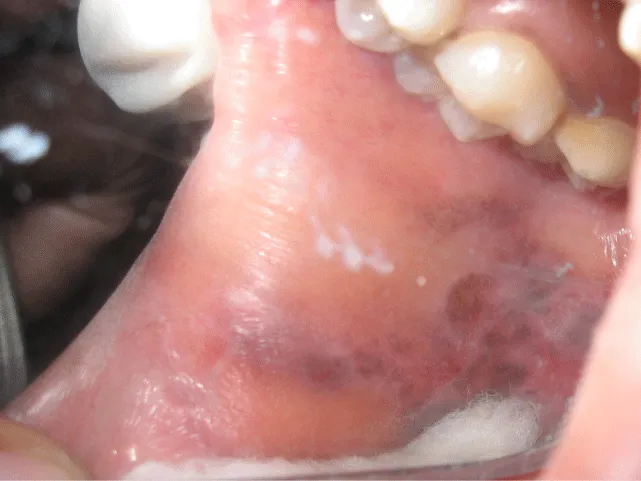Journal of Dental Problems and Solutions
Erosive Mucosa
N Vasudev Ballal1* and Jothi Mariam Varghese2
2Associate Professor, Department of Periodontology, Manipal College of Dental Sciences, Manipal Academy of Higher Education, Manipal, Karnataka, India
Cite this as
Ballal NV, Varghese JM (2018) Erosive Mucosa. J Dent Probl Solut 5(2): 040-040. DOI: 10.17352/2394-8418.000063Sir, I want to share with your readers a case of erosive mucosal lesion due to the use of Neem juice. A patient reported with severe burning sensation intra-orally on the right posterior region. On examination, we found erosive lesions on the buccal mucosa (Figure 1). The right mandibular molars had silver amalgam restorations of eight years standing. Patient medical history was non-contributory. The lesion presented with thick white reticular bands which was ulcerated. The patient complained of burning sensation in that area on eating hot and spicy food. The lesion was diagnosed as an erosive lichenoid reaction to amalgam restoration based on the clinical findings. Later the amalgam restorations were replaced with tooth-coloured restorative material and topical application of corticosteroid gel was prescribed. Patient was recalled after 3 months. On recall, we found that the lesion was not healed and the patient continued to complain regarding the burning sensation. On detailed history, patient mentioned that she drinks one glass of neem juice daily since she was diabetic. Patient was then advised to stop drinking neem juice. Two weeks later the lesion had subsided and the patient was completely free of symptoms. Hence, even though various parts of the neem tree- leaves, flowers, seeds, fruits, roots and bark have been used traditionally for variety of treatments, its adverse effects needs to be warranted.
Article Alerts
Subscribe to our articles alerts and stay tuned.
 This work is licensed under a Creative Commons Attribution 4.0 International License.
This work is licensed under a Creative Commons Attribution 4.0 International License.


 Save to Mendeley
Save to Mendeley
